David Sang and Graham Jones Solutions for Chapter: Stationary Waves, Exercise 5: EXAM-STYLE QUESTIONS
David Sang Physics Solutions for Exercise - David Sang and Graham Jones Solutions for Chapter: Stationary Waves, Exercise 5: EXAM-STYLE QUESTIONS
Attempt the free practice questions on Chapter 14: Stationary Waves, Exercise 5: EXAM-STYLE QUESTIONS with hints and solutions to strengthen your understanding. Physics for Cambridge International AS & A Level Coursebook 3rd Edition Digital Access solutions are prepared by Experienced Embibe Experts.
Questions from David Sang and Graham Jones Solutions for Chapter: Stationary Waves, Exercise 5: EXAM-STYLE QUESTIONS with Hints & Solutions
Which statement is not correct about stationary waves?
(b) A student, experimenting with microwaves, sets up the arrangement shown in this diagram.
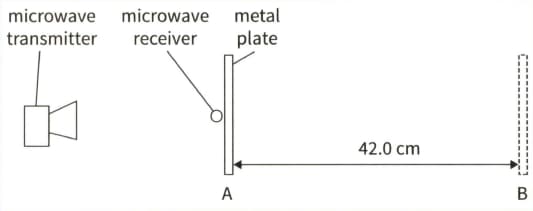
With the metal plate at position there is a very small signal. He slowly moves the plate back, leaving the receiver in the same position. As he does so, he finds that the intensity initially rises until it becomes a maximum, then falls back to a minimum. This cycle repeats a total of five times until the plate reaches position , where once again there is a minimum.
(i) Explain why a series of maxima and minima are heard.
(b) A student, experimenting with microwaves, sets up the arrangement shown in this diagram.
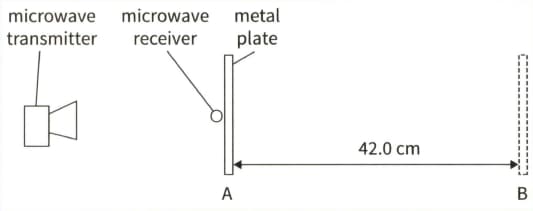
With the metal plate at position there is a very small signal. He slowly moves the plate back, leaving the receiver in the same position. As he does so, he finds that the intensity initially rises until it becomes a maximum, then falls back to a minimum. This cycle repeats a total of five times until the plate reaches position , where once again there is a minimum.
(ii) Determine the frequency of the microwaves.
(c) Explain why there was a minimum when the plate was at position A, next to the detector.
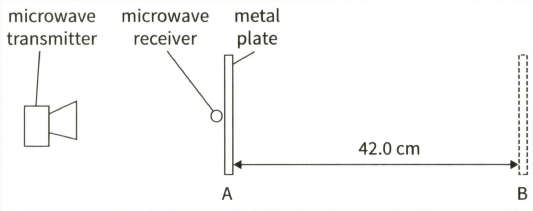
With the metal plate at position there is a very small signal. He slowly moves the plate back, leaving the receiver in the same position. As he does so, he finds that the intensity initially rises until it becomes a maximum, then falls back to a minimum. This cycle repeats a total of five times until the plate reaches position , where once again there is a minimum
This diagram shows an experiment to measure the speed of sound in air.
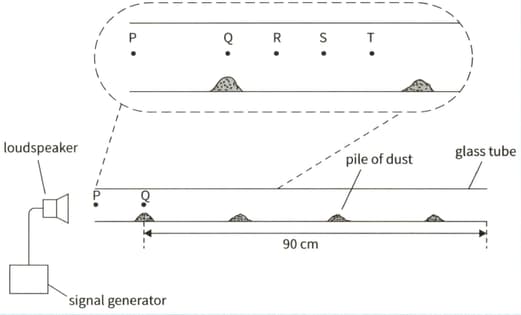
A small amount of dust is scattered along the tube. The loudspeaker is switched on. When the frequency is set at the dust collects in small piles as shown in the diagram.
(a) Determine the wavelength of the sound wave and calculate the speed of sound in the air in the tube.
This diagram shows an experiment to measure the speed of sound in air.
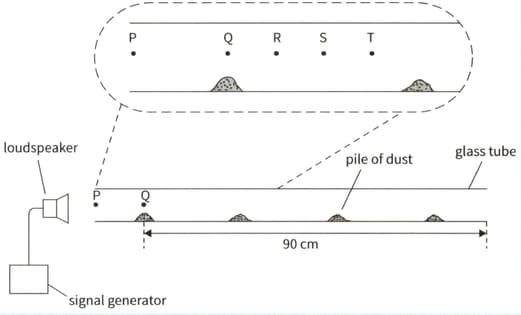
A small amount of dust is scattered along the tube. The loudspeaker is switched on. When the frequency is set at the dust collects in small piles as shown in the diagram.
(b) On a copy of the diagram, show the movement of the air particles at positions ,.
This diagram shows an experiment to measure the speed of sound in air.

A small amount of dust is scattered along the tube. The loudspeaker is switched on. When the frequency is set at the dust collects in small piles as shown in the diagram.
(c) Mark two points on your diagram where the movements of the air particles are out of phase with each other. Label them .
The speed of a transverse wave on a stretched wire is given by the expression
Where is the tension in the wire.
A length of wire is stretched between two fixed point. The tension in the wire is . The wire is gently plucked from the middle. A stationary wave, of fundamental frequency , is produced.
The tension in the wire is now increased to . The percentage uncertainty in new tension is . The length of the wire is unchanged. Calculate the new value for the fundamental frequency when the wire is plucked in the middle. Your answer must include the absolute uncertainty written to an appropriate number of significant figures.
